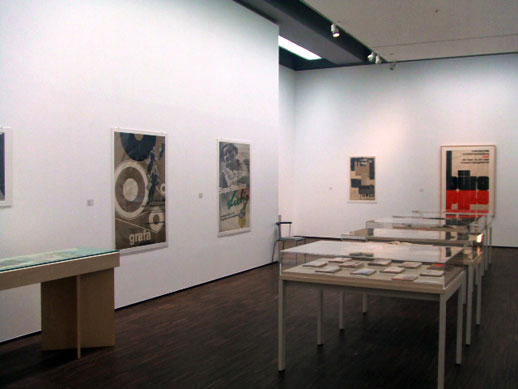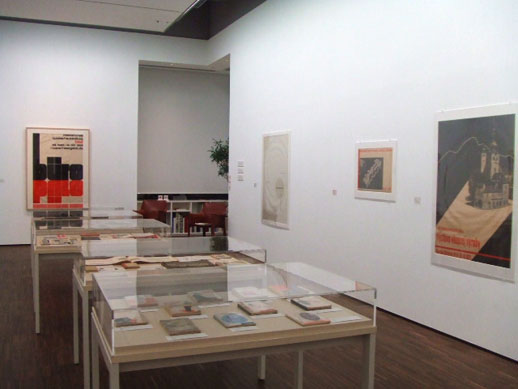Design Sampler
The “Graphic Design 1930: Print, Photography, Typography, Isotype” exhibition at the Fuji Xerox Art Space skips around the early history of design, offering up such nuggets as French fashion magazine illustrations, early examples of German advertising, and Dadaist pamphlets. Through visuals and explanations (unfortunately only in Japanese), the exhibit, now in the second part of two, covers prints, posters, design books, and magazines influential during the modern period.

It is served up like a tasting menu of design’s nascent years: a little bit of this and that, small samples of choice dishes, which add up to a broad, filling experience. The downside is that you don’t really get enough of any one thing to satisfy.
Rounding out the course are examples of Dutch (De Stijl) and Romanian (75 HP and Contimporanul) avant-garde magazines, Czech design books, and Bauhaus course catalogs, plus surrealist prints from Man Ray and abstract, geometrical compositions from Laszlo Moholy-Nagy. With the inclusion of the latter two, the exhibit shows the interrelation of art and design in the 1920s and 30s and touches on the grey area where it is difficult to distinguish between the two (and perhaps start to wonder if we should). Likewise, the early examples of advertisements and fashion illustrations add the complication of commercial intent often associated with design, although without getting into a heavy discussion.

Speaking of commercial intent, the Fuji Xerox Art Space is located on the third floor of Tokyo Midtown, the “design” floor where all the home and office goods boutiques are located. The one room Art Space is smaller than any of the boutiques and seems designed to give mall-goers a quick background and a little appreciation of design before they head back out to possibly consume some.
The cynic in me can’t help but note that the exhibit may give viewers enough knowledge to comfortably drop the name Moholy-Nagy at a dinner party (or maybe one of the pick-up bars downstairs) but fails as a serious design exhibition. That said, not every exhibition needs to be weighty and if you are in or around Midtown it is worth stopping in, though I wouldn’t recommend you make a special trip for it.
Rebecca Milner
Rebecca Milner


